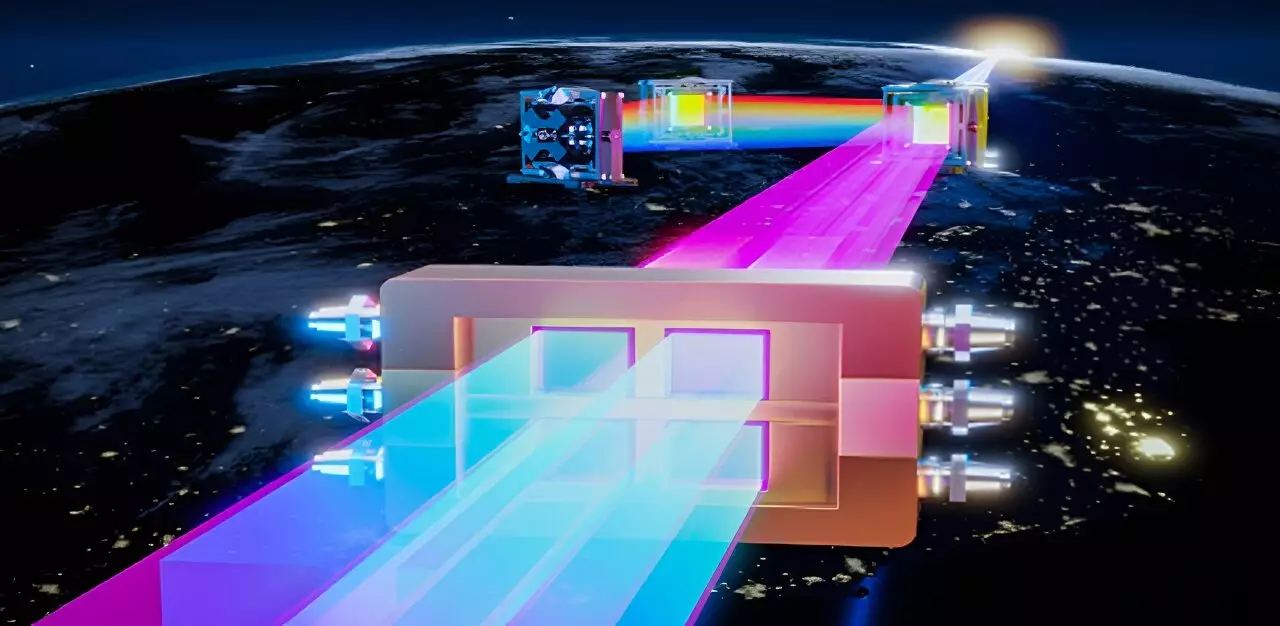Ultra-intense ultrashort lasers have revolutionized various fields, ranging from basic physics to national security, industry, and healthcare. These lasers have enabled groundbreaking research in strong-field laser physics, laser-driven radiation sources, laser particle acceleration, vacuum quantum electrodynamics, and more. With advancements in laser technology, there has been a significant increase in peak laser power, breaking the 10-petawatt barrier. However, the challenge lies in further scaling up these lasers while maintaining stability and efficiency.
The Shift in Gain Medium
The increase in peak laser power can be attributed to a shift in the gain medium for large-aperture lasers. The transition from neodymium-doped glass to titanium:sapphire crystal led to a reduction in pulse duration from 500 femtoseconds (fs) to 25 fs. This shift has significantly enhanced the capabilities of ultra-intense ultrashort lasers. However, it seems that the upper limit for titanium:sapphire lasers currently stands at 10-petawatt.
The Challenges of Optical Parametric Chirped Pulse Amplification
To overcome the limitations imposed by titanium:sapphire lasers, researchers have turned to optical parametric chirped pulse amplification technology. This technology utilizes deuterated potassium dihydrogen phosphate nonlinear crystals. Although it shows promise for 10 to 100-petawatt lasers, it presents challenges such as low pump-to-signal conversion efficiency and poor spatiotemporal-spectral-energy stability. These issues may hinder the realization and application of future ultra-intense ultrashort lasers.
Despite the challenges posed by optical parametric chirped pulse amplification technology, researchers believe that titanium:sapphire chirped pulse amplification still holds great potential for the development of ultra-intense ultrashort lasers. Titanium:sapphire crystal serves as an energy-level-type broadband laser gain medium. When a pump pulse is absorbed, energy storage occurs through a population inversion between the upper and lower energy levels. The stored energy is then extracted and amplified as the signal pulse passes through the crystal.
The Issue of Transverse Parasitic Lasing
One of the limitations of titanium:sapphire crystals is transverse parasitic lasing, where amplified spontaneous emission noise along the crystal diameter consumes stored energy and reduces signal laser amplification. The maximum aperture of titanium:sapphire crystals currently supports 10-petawatt lasers. Even with larger crystals, strong transverse parasitic lasing exponentially increases as crystal size increases, making laser amplification unfeasible.
A Novel Approach: Coherently Tiling Multiple Titanium:Sapphire Crystals
To overcome the limitations of transverse parasitic lasing, researchers have developed an innovative approach. By coherently tiling multiple titanium:sapphire crystals together, the limitations on the 10-petawatt limit can be surpassed. This method increases the aperture diameter of the entire tiled crystal while simultaneously truncating the transverse parasitic lasing within each tiling crystal.
Promising Results
The application of coherently tiled titanium:sapphire laser amplification has shown promising results. In a 100-terawatt laser system, near-ideal laser amplification was achieved. The technology exhibited high conversion efficiencies, stable energies, broadband spectra, short pulses, and small focal spots. This breakthrough provides a relatively easy and inexpensive way to exceed the current 10-petawatt limit.
By incorporating a 2×2 coherently tiled titanium:sapphire high-energy laser amplifier into existing laser systems, such as China’s SULF or EU’s ELI-NP, the current 10-petawatt limit can be further increased to 40-petawatt with an accompanying increase in focused peak intensity. This advancement holds the promise of enhancing the experimental capabilities of ultra-intense ultrashort lasers for strong-field laser physics.
The future of ultra-intense ultrashort lasers lies in breaking the 10-petawatt limit. Although optical parametric chirped pulse amplification technology offers a potential solution, it presents challenges. On the other hand, titanium:sapphire chirped pulse amplification technology, when combined with the innovative approach of coherently tiling multiple crystals, shows great promise for further scaling up laser power. This breakthrough opens doors for more extensive research and applications in various fields, pushing the boundaries of what is possible with ultra-intense ultrashort lasers.


Leave a Reply